How does web scraping grocery data from Jiomart, BigBasket, and others help gain insights?
Feb 25
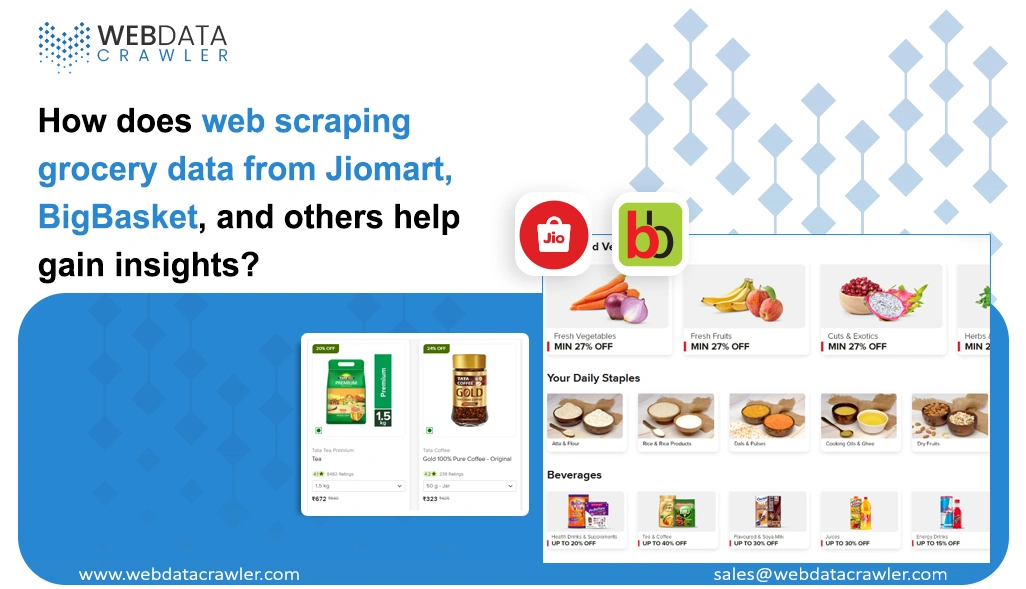
Introduction
In the fast-paced retail industry, success hinges on more than intuition—it requires data-driven strategies that align with market trends and consumer behavior. Web Scraping Grocery Data has become a game-changing solution for businesses navigating India's rapidly expanding online grocery market and beyond.
With industry leaders like Jiomart, BigBasket, Amazon, Blinkit, and DMart shaping the digital grocery landscape, retailers and brands must leverage accurate, real-time data to drive informed decision-making. This guide delves into how extracting and analyzing data from these platforms can unlock valuable market insights and provide a competitive edge for your business.
The Rise of Online Grocery Shopping Worldwide
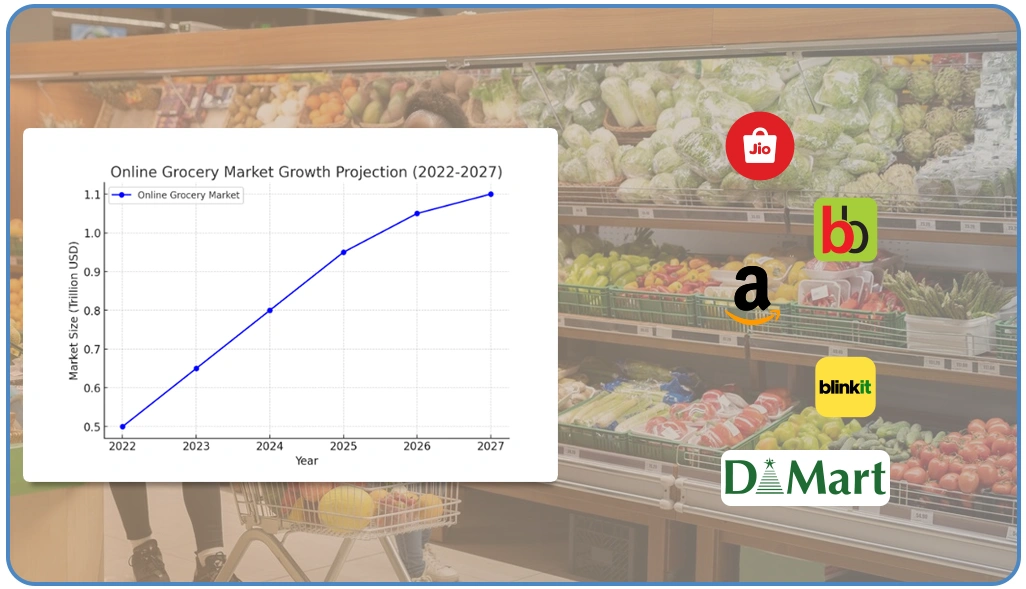
The global e-grocery market has experienced remarkable growth, driven by evolving consumer preferences and the accelerated shift toward digital commerce. Market research suggests that the online grocery market will reach $1.1 trillion by 2027, presenting a significant opportunity for retailers and brands across various regions.
The rapid growth in the industry can be attributed to several key factors:
- Increased smartphone penetration and improved internet accessibility across diverse markets, making digital shopping more seamless.
- A broader comfort with online shopping among various demographic groups, driving higher adoption rates.
- The expansion of quick commerce and the growing expectation for ultra-fast delivery are reshaping consumer expectations.
- Traditional brick-and-mortar retailers are embracing omnichannel retail strategies to stay competitive.
- Evolving urban lifestyles that prioritize convenience and efficient, time-saving shopping solutions.
- Post-pandemic behavioral shifts have led to lasting changes in consumer shopping habits.
In this dynamic and competitive landscape, platforms like Jiomart, BigBasket, Amazon, Blinkit, DMart, and their global counterparts continuously refine their strategies, pricing, product assortments, and promotional activities.
This constant evolution underscores the need for real-time market intelligence—an area where Web Scraping Grocery Data solutions play a crucial role. They enable businesses to track trends, optimize offerings, and stay ahead in the market.
Understanding Web Scraping and Its Applications in Grocery Retail
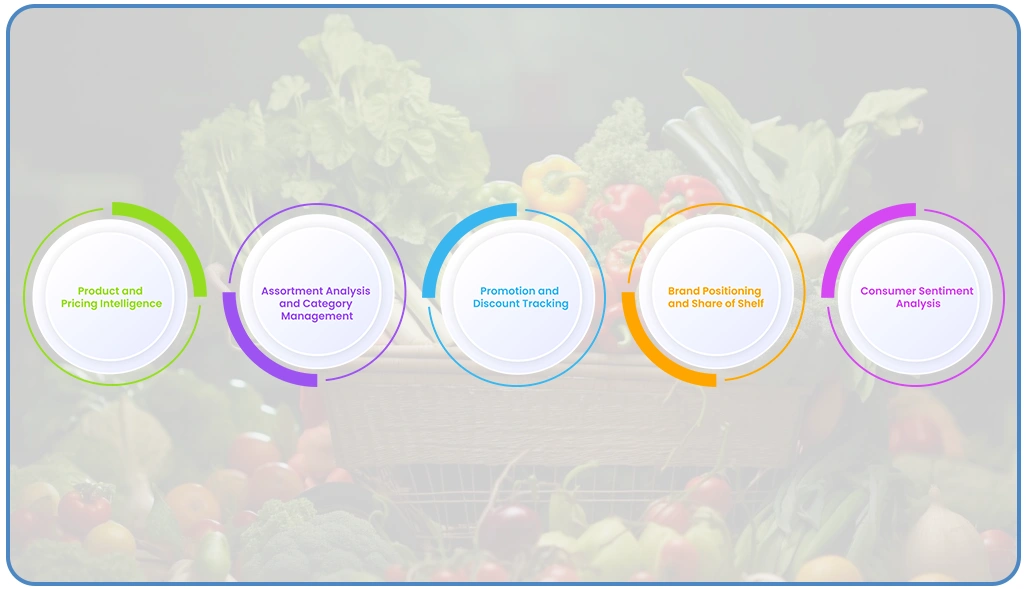
Web Scraping Grocery Data is the automated extraction of publicly available information from online grocery platforms. This process converts unstructured website data into structured, actionable insights that businesses can leverage for strategic decision-making.
With technological advancements, web scraping has become more sophisticated, allowing for highly accurate and efficient data extraction. Modern solutions can navigate complex website structures, manage dynamic content loading, bypass anti-scraping measures, and extract data at scale—all without disrupting target websites' operations.
In the grocery retail sector, web scraping offers several key applications:
Product and Pricing Intelligence
Retailers can track competitors' pricing strategies by utilizing Jiomart Data Scraping and BigBasket Data Extraction in real-time. These insights enable businesses to adjust prices dynamically, ensuring competitive positioning while maintaining profitability.
Assortment Analysis and Category Management
With Multi-Platform Product Data Scraping, businesses can assess competitors' product assortments, identifying market gaps and opportunities to enhance their offerings with unique or in-demand products.
Promotion and Discount Tracking
Extracting promotional data regularly through Amazon Product Scraping allows businesses to analyze competitors' discounting strategies and seasonal promotional trends, helping them craft effective pricing and marketing campaigns.
Brand Positioning and Share of Shelf
By leveraging Blinkit Inventory Scraping, businesses can evaluate how products are displayed and ranked on digital shelves. This insight helps optimize product visibility and improve brand positioning.
Consumer Sentiment Analysis
Gathering Customer Review Analysis from various platforms provides valuable insights into consumer preferences, pain points, and emerging trends, helping brands refine their offerings and customer engagement strategies.
With the right web scraping strategies, grocery retailers can gain a competitive edge by making data-driven decisions that enhance pricing, product assortment, promotions, and customer experience.
Key Benefits of Grocery Data Extraction
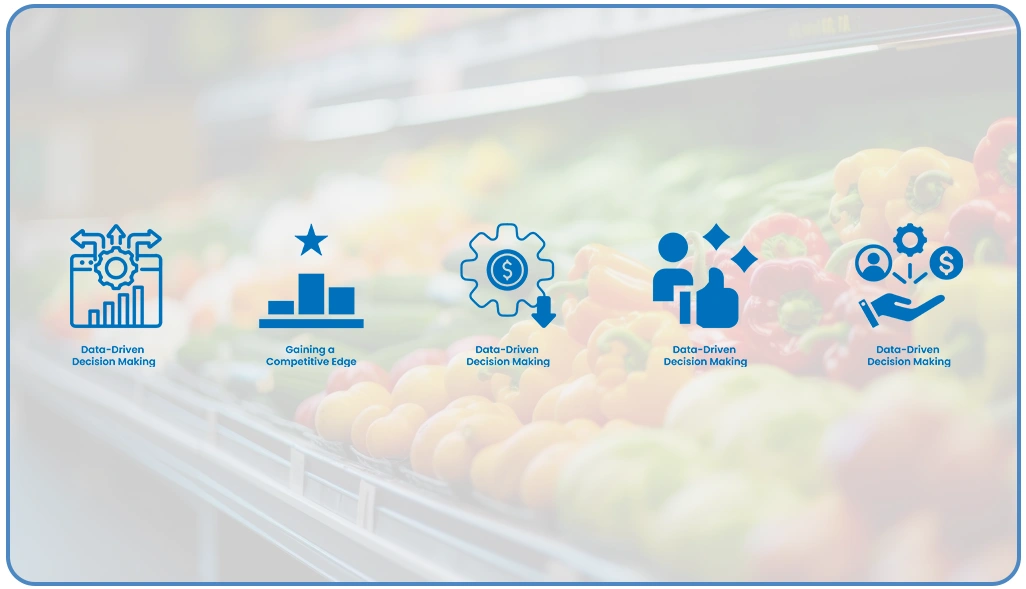
Leveraging advanced ECommerce Data Extraction Services for grocery retail unlocks several strategic advantages that drive growth and efficiency.
- Data-Driven Decision Making
- Gaining a Competitive Edge
- Optimized Pricing for Maximum Profitability
- Enhancing Customer Experience
- Smarter Resource Allocation
Instead of relying on guesswork or outdated insights, businesses can make informed choices backed by accurate, real-time market data. This data-driven approach minimizes risks and enhances the effectiveness of business strategies, leading to better outcomes.
A deep understanding of competitors' pricing and product strategies through Competitive Pricing Analysis and assortment tracking provides a crucial advantage in the rapidly evolving grocery sector. Retailers can swiftly adjust to market changes, counter competitors' tactics, and identify untapped opportunities.
By collecting and analyzing comprehensive price data across multiple platforms, retailers can fine-tune their pricing strategies to remain competitive while maximizing profitability. This dynamic pricing approach can be tailored based on product categories, demand fluctuations, and competitor promotions.
By understanding consumer demand through Market Trend Analysis In ECommerce, retailers can optimize their product assortment and refine the shopping experience. This ensures that businesses meet customer expectations efficiently, improving satisfaction and loyalty.
With precise, data-backed insights, businesses can allocate resources—whether inventory, marketing budgets, or operational efforts—toward the most profitable and high-potential opportunities. This optimization leads to increased efficiency and better overall performance.
Platform-Specific Insights: Key Data Points to Extract
Each central grocery platform provides unique datasets that can unlock valuable business intelligence when adequately extracted and analyzed. Here’s a closer look at the insights gained from different platforms:
1. JioMart

Leveraging Jiomart Data Scraping enables businesses to:
- Analyze pricing strategies across various product categories.
- Identify regional price variations and product availability trends.
- Understand Reliance’s private label strategy and its market positioning.
- Assess the integration of offline Reliance Retail stores with online operations.
- Track flash sale patterns and promotional event calendars.
2. BigBasket
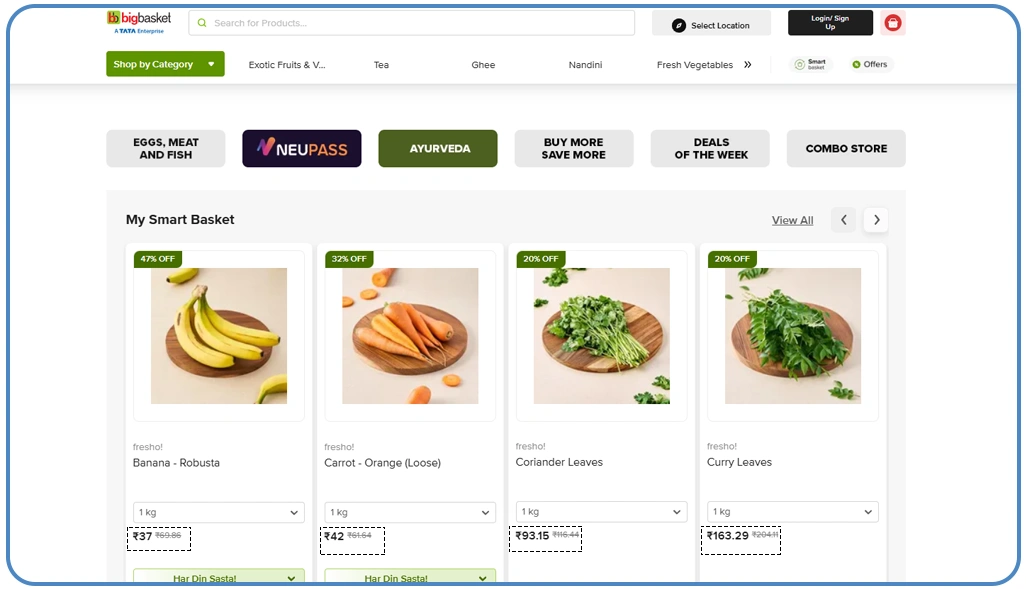
Through BigBasket Data Extraction, businesses can gain insights into:
- The positioning and pricing of premium and organic products.
- Private label strategies across different price segments, including Fresho and BB Royal.
- The effectiveness of subscription models and customer loyalty programs.
- Delivery slot pricing and availability across different regions.
- The functionality of category-wise merchandising and recommendation algorithms.
3. Amazon
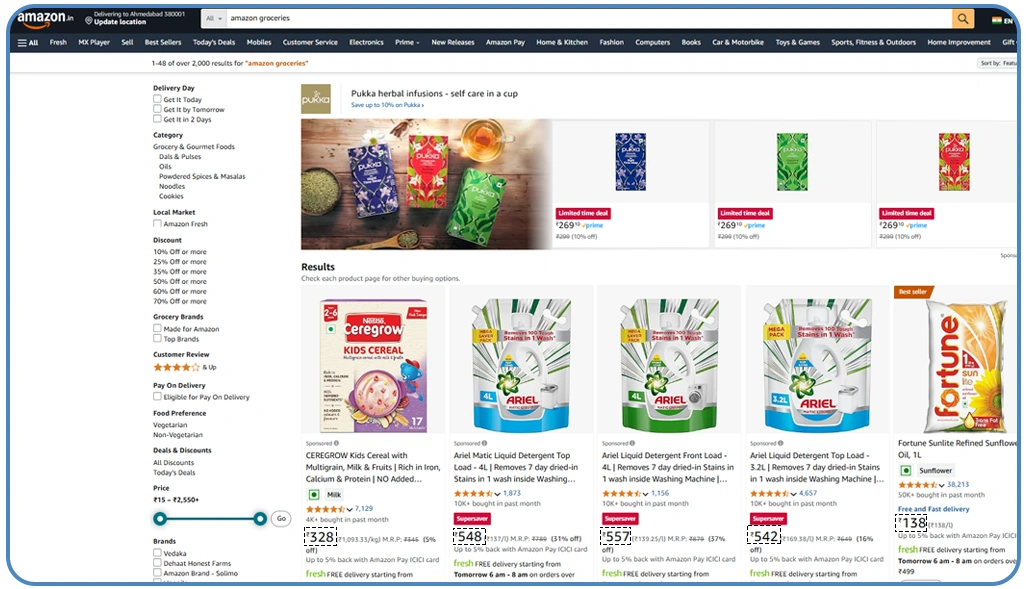
Utilizing Amazon Product Scraping for grocery insights helps in:
- Understanding Amazon Fresh and Pantry strategies and their market impact.
- Evaluating the integration of grocery offerings with Prime membership benefits.
- Analyzing bestseller rankings and evolving customer preferences.
- Identifying cross-selling and bundling strategies to maximize sales.
- Assessing review sentiment and tracking product performance metrics.
4. Blinkit
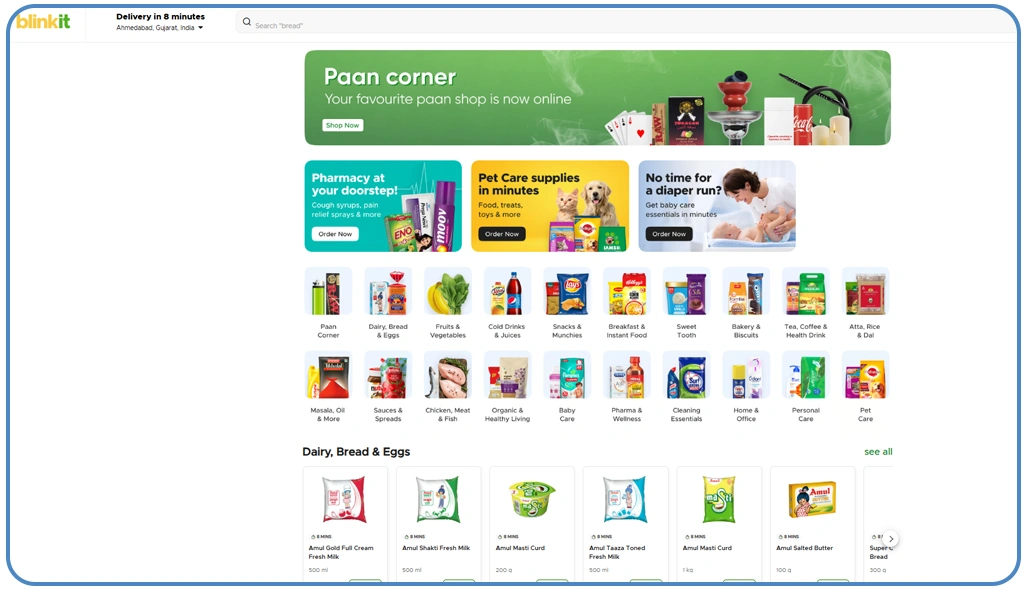
By implementing Blinkit Inventory Scraping, businesses can:
- Decode quick commerce assortment strategies and product selection patterns.
- Monitor hyperlocal inventory management and fulfillment strategies.
- Evaluate dark store distribution coverage and operational efficiencies.
- Identify premium pricing models driven by convenience.
- Track the impact of limited-time offers and impulse purchase promotions.
5. DMart
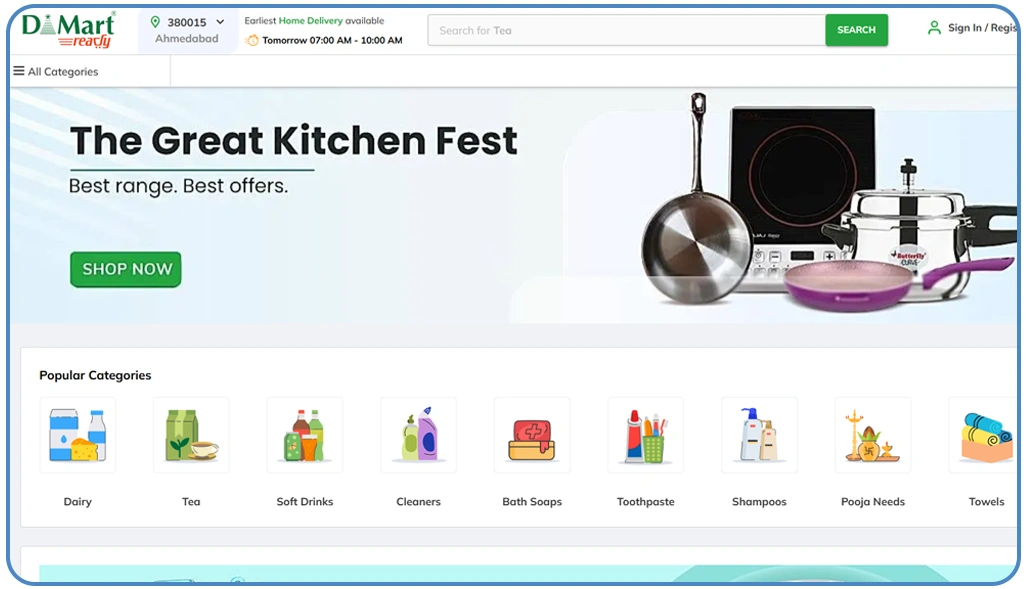
Through DMart Product Data Extraction, businesses can uncover:
- Value pricing strategies and bulk discount patterns.
- The effectiveness of DMart Ready’s online-to-offline integration.
- The use of limited assortment strategies to optimize inventory.
- Regional product variations and their influence on demand.
- The impact of a no-frills approach to online grocery on customer behavior.
By extracting and analyzing platform-specific data, businesses can refine their pricing strategies, optimize inventory management, and enhance customer engagement across the competitive grocery e-commerce landscape.
Implementing Effective Data Scraping Strategies
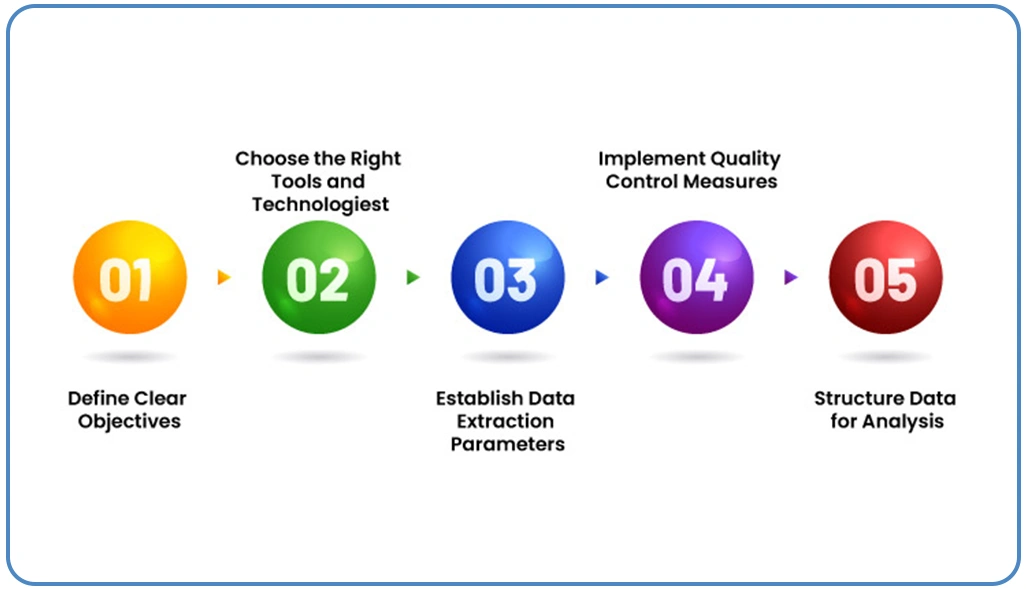
Extracting meaningful insights from Web Scraping Grocery Data requires a well-structured approach. Here’s how you can optimize your data extraction process for accuracy, efficiency, and scalability:
1. Define Clear Objectives
Before launching a scraping initiative, clearly outline the insights you aim to gather:
- Are you focused on pricing intelligence to monitor competitive pricing trends?
- Do you need assortment comparisons to analyze product availability across different platforms?
- Are you tracking specific brands or categories for competitive benchmarking?
- Do you require regional variation analysis to understand market differences?
Establishing these objectives ensures your data collection aligns with business needs.
2. Choose the Right Tools and Technologies
The quality and reliability of your data depend on selecting the appropriate Tools For Web Data Extraction:
- Python libraries such as Scrapy, Beautiful Soup, and Selenium for efficient data collection.
- Specialized grocery retail scraping services tailored for industry-specific needs.
- Proxy management systems to prevent IP bans and maintain uninterrupted data flow.
- Data cleaning and normalization tools to refine and standardize extracted information.
- Robust storage and database solutions to handle large-scale datasets effectively.
3. Establish Data Extraction Parameters
To ensure relevant and timely data collection, define the scope and frequency of extraction:
- Identify key data points to scrape, including prices, product descriptions, images, reviews, and stock availability.
- Set an appropriate refresh rate—real-time, hourly, or daily updates.
- Determine the geographical regions to target for localized insights.
- Prioritize specific product categories based on business goals.
4. Implement Quality Control Measures
Data accuracy is critical for making informed decisions. Strengthen data reliability through:
- Validation processes to cross-check extracted data for accuracy.
- Regular audits to identify inconsistencies or missing information.
- Manual sample comparisons to verify the integrity of automated extraction.
- Monitoring for pattern anomalies, which may indicate data discrepancies or scraping errors.
5. Structure Data for Analysis
Raw data alone is not enough—it must be structured for meaningful interpretation:
- Maintain consistent data formats and schemas to simplify analysis.
- Utilize relational databases to connect different data points efficiently.
- Apply data normalization techniques for cross-platform comparisons.
- Establish historical data archives to track trends and market changes over time.
By following these best practices, businesses can leverage Web Scraping Grocery Data to drive data-driven decisions, optimize pricing strategies, and gain a competitive edge in the retail market.
How Can Web Data Crawler Help You?
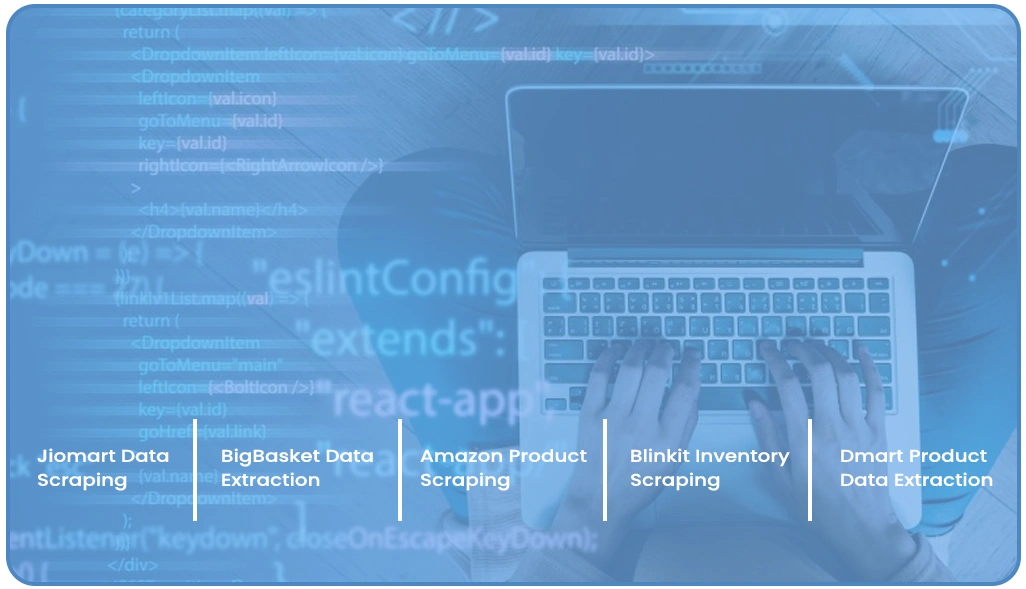
We specialize in Grocery Data Scraping Services, helping businesses uncover valuable insights to stay ahead in the competitive market.
Our expertise includes:
- Jiomart Data Scraping to monitor pricing and product availability.
- BigBasket Data Extraction for in-depth market trend analysis.
- Amazon Product Scraping to track competitor strategies effectively.
- Blinkit Inventory Scraping for real-time inventory management.
- Dmart Product Data Extraction to refine pricing and promotional strategies.
With our ECommerce Data Extraction Services, businesses gain access to structured, actionable data for more intelligent decision-making. Whether optimizing pricing strategies, gaining insights from customer feedback, or tracking evolving market trends, our solutions are designed to enhance your retail strategy.
Conclusion
In today's competitive grocery retail landscape, Web Scraping Grocery Data is no longer optional—it's essential. Insights from Jiomart and BigBasket Data Scraping empower businesses to refine pricing, optimize assortments, and enhance promotions.
By leveraging these insights, companies gain a competitive edge—adapting quickly, maximizing efficiency, and driving growth across key metrics like conversion rates and market share.
Unlock the power of data-driven decisions with us. Our ECommerce Data Extraction Services provide tailored solutions to help you stay ahead in the evolving online grocery market. Contact Web Data Crawler today!